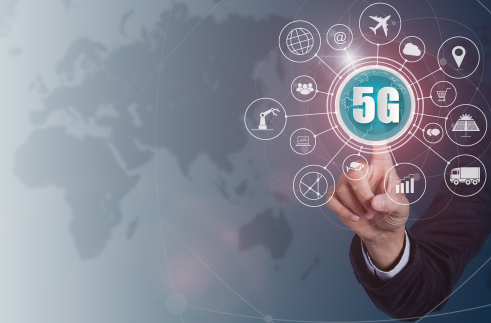How to ensure 5G wireless network security

How to ensure 5G wireless network security

5G creates opportunities for users and cybercriminals, so how can businesses secure 5G wireless networks?
One thing is clear about 5G and cybersecurity, it won't cover more of the same. Businesses can't just expand existing practices and technologies, they need a new approach. 5G needs to be seen as a paradigm shift, and they will require an open mind.
5G Wireless Network Security
New applications will emerge to take advantage of the faster speeds 5G offers, a huge opportunity, but not an incremental step.
Opportunities come with challenges. While 5G is paving the way for the future of next-generation technology, it also presents a number of security concerns that need to be addressed before it's too late.
5G networks will free up high-speed servers that will enable billions of devices to connect and work more efficiently, but this data will be highly sought after, and security measures will have to be released at the design stage. Traditional methods tell us that old technologies are not immune to modern attacks, so adding more devices to a network naturally increases the number of intrusion points.
For businesses securing 5G networks, there are four considerations:
- wireless access network
- core network
- Transmission rate
- Internet connection
Radio Access Network (RAN)
The RAN is the actual antenna that carries the radio waves in the 5G band. They sit at the edge of the entire ecosystem, on cell towers as close as possible to end users, acting as a gateway from the radio world to packet-switched or IP-based digital networks.
RAN presents unique challenges beyond the risk of physical damage to the antenna. At the height of the Covid-19 pandemic, for example, some blamed 5G for exacerbating the Covid-19 outbreak and trying to disrupt base stations.
For businesses trying to secure 5G wireless networks, there's nothing they can do to secure base stations, which is beyond their control. But they need contingency plans, and they need plans to ensure business continuity. In short, they need to understand the risks and plan accordingly.
core network
The core network is the heart of the system and provides all the required technical coverage services, which are absolutely critical tasks and any compromise could disrupt the availability of the mobile network.
Network technology presents a tricky foreign agent problem. Before the infrastructure enables foreign businesses to effectively monitor data, the use of equipment in networks provided by foreign businesses must be thoroughly checked. In addition, high-risk suppliers need to be excluded from analyzing data, and stricter rules are currently in place to privatize infrastructure.
Transmission and Network Interconnection
Finally, there are transport and network interconnects, which determine how the entire system connects to the core or other provider's network for roaming and movement from cell towers.
subversive
5G also means disruption, a whole new way of delivering security. 4G uses a so-called proprietary architecture, but later 4G and 5G are different. Things are different. The architecture might use VMware or OpenStack, but whatever the software platform is, that's a more open environment.
5G cybersecurity requires a different set of skills, but businesses must be realistic about the issues they must face. We have to look at 5G very strategically, we have to look at this realistically with an open mind because very difficult decisions may be made and the comfortable relationship with some suppliers may have to end. However, despite not seeing the homogenization of 5G, the traditional market will not disappear overnight.
Machine Learning and the Cloud
5G will create multiple opportunities for the application of artificial intelligence and the widespread use of cloud and edge computing. Cloud-based threat analysis and the introduction of big data machine learning will enable rapid responses to unknown threats and potential attacks.
While there are steps we can take to mitigate the current threat landscape, the bad guys are very good at adapting to change, so while 5G will stop some of the current threats, it will also create more unknown gaps, so the result will be continued adoption of new mitigations technology to defend against increasingly heavier and more severe threats.
And for all businesses, confidentiality, integrity and availability are key issues that must be addressed, especially our telecommunications providers.
They must follow key frameworks such as NIST and CAS-T, and implement a clear cybersecurity strategy to protect their assets and end customers. This will include thorough external security testing, comprehensive security monitoring, clear security objectives and robust risk management processes.
Opportunities and challenges coexist
5G is a huge business opportunity, but for enterprises to secure 5G wireless networks, they must adopt a new way of thinking. Disruption creates winners and losers, and to be a winner, companies must commit to challenges, embrace opportunities, and plan strategically. Most importantly, they have to be ready for change, a lot of change.